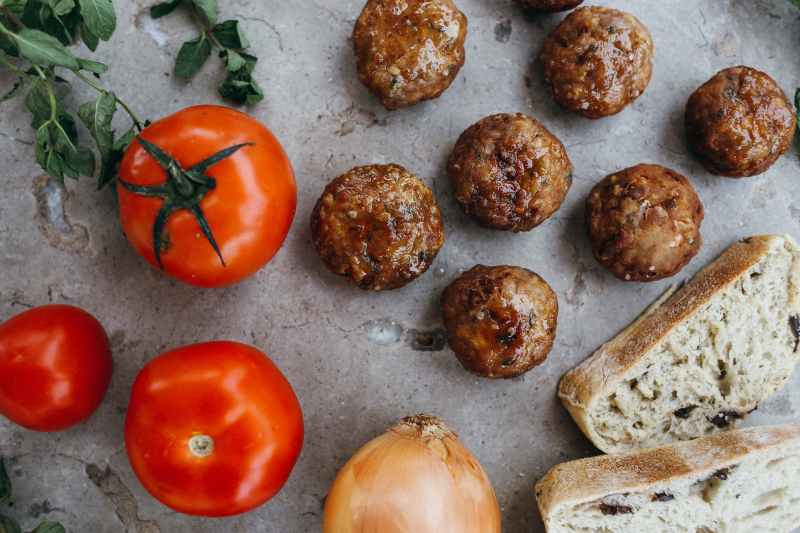
Suppose you make a lot of dishes with ground beef. In that case, you know that this conveniently shrinkwrapped ingredient can come with one very annoying risk – crumbly, can’t-reach-for-the-water-fast-enough, completely unappetizing dryness. Of course, many of us – thanks to knowledgable mothers and grandmothers – grew up armed, knowing this risk, prepared to tackle it head-on in our most beloved ground beef dishes. And while you, too, may know the secret to keeping your meatloaf, meatballs, or even burgers from drying out, you may not know that this technique has a name. It’s called a panade.
A panade (puh-NOD) is simply a pasted mixture of bread and liquid that’s added to ground beef recipes like meatloaf or meatballs to make them moist and tender. Most often made of humble white bread and milk, this paste is the absolute best way to guarantee your ground beef dishes stay tender and moist instead of turning to flavorless meat bricks in your marinara sauce.
How does a panade work?
The combination of starch and liquid in a panade keeps the proteins in the ground beef from tightening and shrinking during the cooking process. As the meat cooks, the panade turns into a sort of moisture-making lubricant that settles between protein fibers, keeping them from getting tough.
The method couldn’t be simpler and is made using ingredients you’re probably already putting in your recipe – bread and milk (or another liquid such as broth). Simply soak your bread in milk and wait for the milk to absorb into the bread completely. This should only take a minute or two. Once absorbed, mash the two ingredients together into a paste, and you’ve just made a panade. A humble yet powerful little super-ingredient that will give you the most deliciously moist meatballs or meatloaf you’ve ever tasted.

Panade recipe
This recipe is for one pound of ground beef and is easily scalable if your recipe calls for more or less.
Ingredients
- 1/4 cup white sandwich bread, torn into pieces
- 1/4 cup milk
Method
- Add bread and milk to a medium bowl, and let sit until the milk is absorbed about two minutes.
- Mash until smooth, then mix it into your recipe.

Panade tips and tricks
- Adding a panade to burgers, meatloaf, and meatballs is a great way to add moisture, but keep flavors in mind, too. Depending on your dish, feel free to mix up the flavors of your bread to complement the other flavors in the recipe. Whole wheat, sourdough, rye, and pumpernickel bread will all add their own special flavor characteristics.
- In our opinion, the added fat of milk creates a more tender panade and, therefore, dish. If you’re avoiding dairy, though, you can definitely use broth or stock instead of milk.
Editors' Recommendations
- Black tea vs. green tea: Which offers more benefits?
- Our 5 favorite vodka drinks, ranked
- 5 fan-favorite budget rum bottles, ranked
- The important health benefits of magnesium you need to know about
- How to make chai tea: Tasty recipes for a homemade delight




